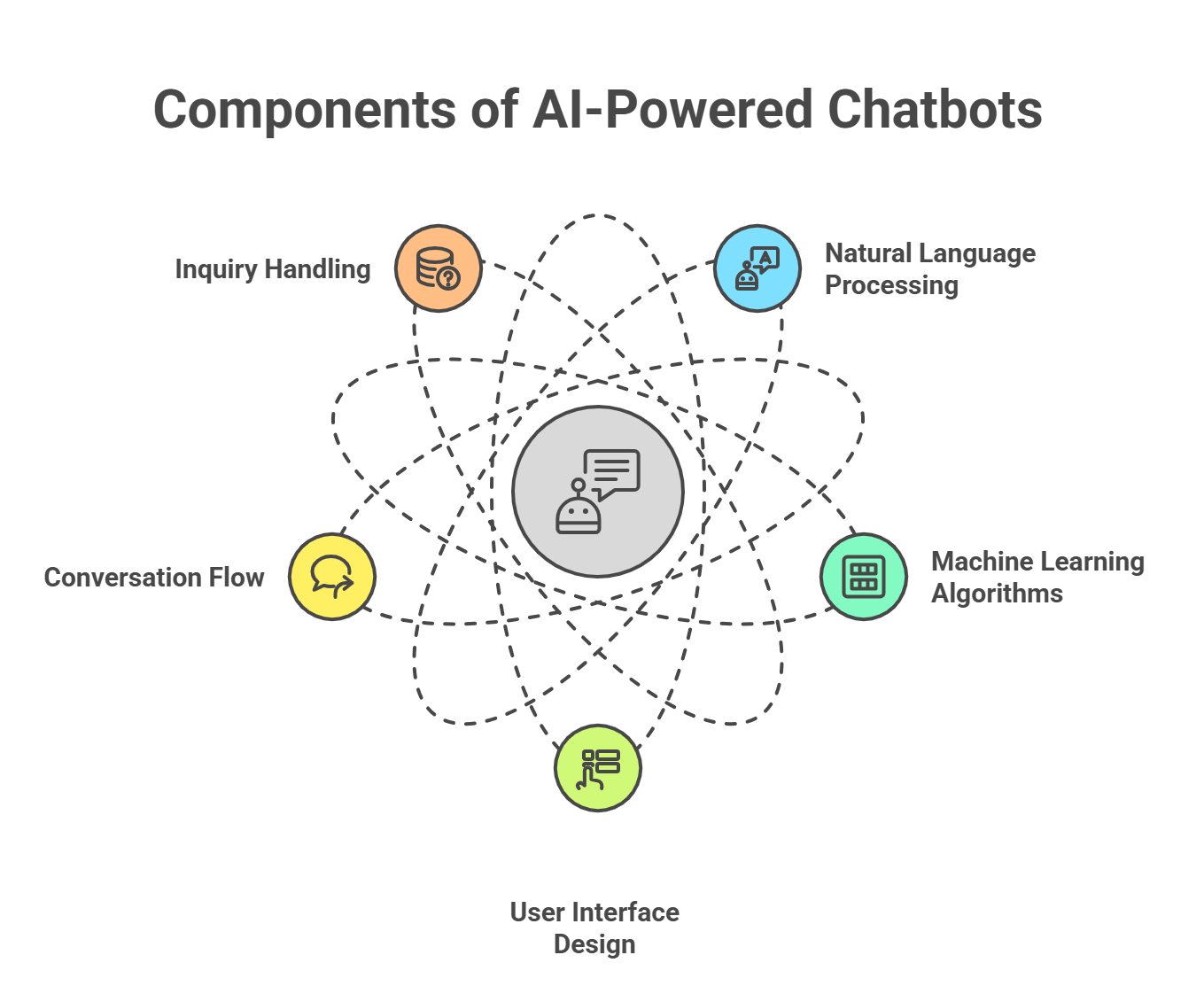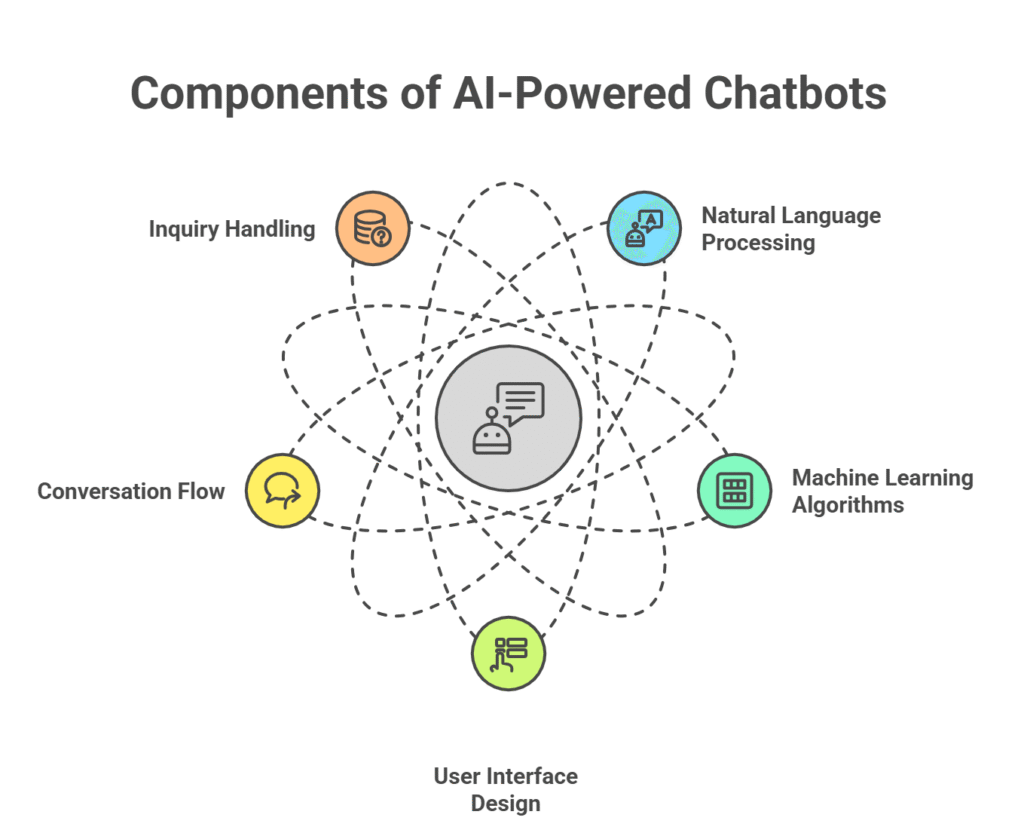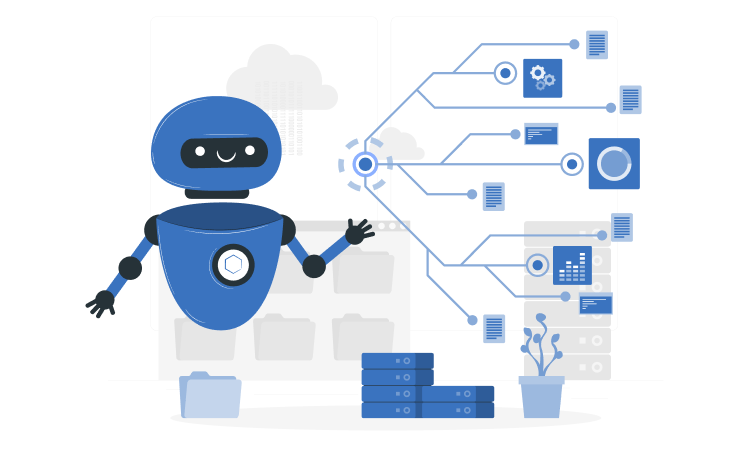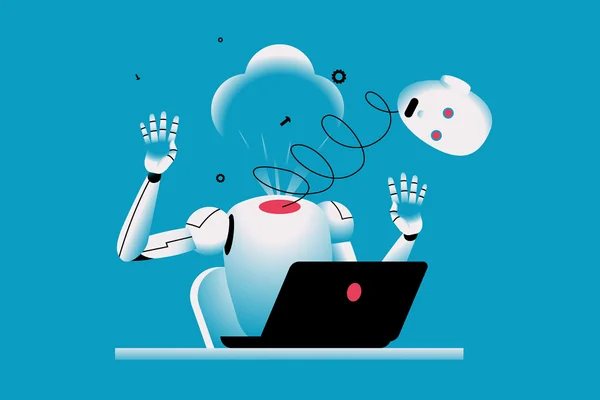
Designing AI-powered website support chatbots
The landscape of customer interaction is undergoing a seismic shift, driven by advancements in artificial intelligence. AI-powered website support chatbots have evolved from rudimentary, often frustrating, automated response systems into sophisticated strategic assets. They are no longer a tactical tool for deflecting simple queries but a core component of a modern enterprise’s customer experience (CX), sales, and marketing infrastructure. This evolution necessitates a new strategic framework for their design, deployment, and management, viewing them not as a cost center to be minimized, but as a value engine to be maximized.
Section 1: The Strategic Imperative of AI-Powered Support
Redefining Customer Support: From Cost Center to Value Engine
Historically, customer support has been viewed as a necessary operational cost. The primary objective was to resolve issues as quickly and cheaply as possible. AI-powered chatbots are fundamentally altering this paradigm. By automating responses to common inquiries, they provide an immediate, first line of support that operates 24/7, resolving issues quickly and improving the overall customer journey. This round-the-clock availability ensures that customers receive assistance outside of regular business hours, leading to faster resolutions and enhanced satisfaction.

This automation has a profound impact on human support teams. Research indicates that chatbots can successfully handle up to 80% of standard business questions, significantly reducing the volume of repetitive queries that lead to agent burnout. This frees human agents to dedicate their time and expertise to more complex, nuanced, and high-value problems where creativity, empathy, and initiative are most critical. The result is a more engaged and productive workforce, transforming the support function from a reactive cost center into a proactive engine for building customer loyalty and engagement.
The recent advent of Generative AI has dramatically accelerated this transformation. Unlike their predecessors, which were largely confined to pre-scripted answers, generative AI-powered chatbots can handle a much wider range of complex queries, offer deeply personalized recommendations, and deliver dynamic, human-like communication at a massive scale. This leap in capability allows for a level of proactive engagement and personalization that was previously unimaginable, solidifying the chatbot’s role as a central pillar of the modern customer experience.
Core Functions and Business Impact
The strategic value of a well-designed AI chatbot extends far beyond simple query deflection. Its functions are increasingly integrated, touching every part of the customer lifecycle and delivering measurable business impact across multiple domains.
- Operational Efficiency and Cost Reduction: The most immediate and quantifiable benefit of chatbot implementation is the reduction in operational costs. By automating workflows and providing 24/7 support without the need for round-the-clock human staffing, businesses can significantly lower expenses. This automation liberates employees from repetitive tasks, allowing them to focus on more rewarding and strategically valuable work, which can also lead to reduced employee turnover.
- Revenue Generation and Lead Qualification: Modern AI chatbots are powerful sales and marketing tools. They are designed to proactively generate qualified leads by capturing not just names and email addresses, but also detailed information such as product needs and company details. They can engage website visitors with proactive messaging, introducing them to products and services, highlighting promotions, and generating curiosity. By asking qualifying questions and setting up callbacks, the chatbot acts as an initial filter for the sales funnel, ensuring that human sales agents engage with the most promising prospects.
- Enhanced Customer Experience (CX): In today’s competitive market, customer experience is a key differentiator. AI chatbots enhance CX by providing instant, personalized, and consistent service. They offer an omnichannel presence, meeting customers on their preferred platforms, whether it be the company website, social media, or messaging apps like WhatsApp. Furthermore, they can support multiple languages, making a business’s potential market truly global. A critical feature for improving CX is the ability of enterprise-grade chatbots to record conversation details. When an issue is escalated to a human agent, the customer does not have to repeat information, which significantly reduces frustration and creates a seamless support experience.
The functions of a modern chatbot are no longer siloed within a single department. A single conversational flow can seamlessly blend support, marketing, and sales. This convergence means that success requires the formation of a cross-functional team from the project’s inception, involving key stakeholders from marketing, sales, product, and support to define holistic goals.
The Evolution of Conversational AI: A Paradigm Shift
The journey of the chatbot from a simple script-follower to an intelligent conversational partner is a story of rapid technological advancement.
- From Rule-Based to AI-Driven: The earliest chatbots were rule-based, operating on rigid decision trees. The first major leap forward came with the integration of AI, specifically Natural Language Processing (NLP), which enabled bots to understand varied user inputs, handle typos and slang, and maintain the context of a conversation.
- The Generative AI Inflection Point: The introduction of Large Language Models (LLMs) and Generative AI represents a fundamental and disruptive shift. These models are trained on immense datasets, allowing them to move beyond simply understanding language to actively generating new, coherent, and contextually appropriate text on the fly. This capability transforms the chatbot from a mere conversational agent into a generative partner.
This technological leap has created a new baseline for customer expectations. As the public becomes more accustomed to the fluency of systems like ChatGPT, their tolerance for clunky, rule-based chatbots has plummeted. A user who has a seamless interaction with a public LLM and then encounters a rigid, unhelpful bot on a company’s support page will experience a jarring and intensely negative contrast. In the current technological landscape, a poorly executed AI chatbot is a significant corporate liability.
Section 2: The Technology Stack: Deconstructing the AI Engine
At the heart of any AI-powered chatbot is a complex technology stack. For business leaders, a foundational understanding of these components is essential for making informed decisions. The stack can be broken down into four key layers: Natural Language Processing (NLP), Machine Learning (ML), Generative AI and Large Language Models (LLMs), and Retrieval-Augmented Generation (RAG).
Natural Language Processing (NLP) in Depth
NLP is the core engine that powers the chatbot’s conversational abilities and is comprised of two primary subfields: Natural Language Understanding (NLU) and Natural Language Generation (NLG).
- Natural Language Understanding (NLU): The Art of Listening: NLU focuses on deciphering the meaning and, most importantly, the intent behind a user’s words. This involves several sophisticated tasks:
- Intent Recognition: This is the most critical function. It identifies the user’s underlying goal. For example, in “I need to change my flight to Boston tomorrow,” the intent is “change_flight.”
- Entity Extraction: The system extracts specific pieces of information, known as entities. In the example above, the entities are “Boston” (destination) and “tomorrow” (date).
- Sentiment Analysis: Advanced NLU can detect the emotional tone of the user’s message—whether they are happy, neutral, or frustrated.
- Natural Language Generation (NLG): The Art of Speaking: If NLU is about listening, NLG is about responding. This subfield focuses on constructing a grammatically correct, coherent, and contextually appropriate response in human-like language.
The Role of Machine Learning and Deep Learning
Machine learning is the foundation that allows chatbots to improve over time without being explicitly reprogrammed. ML algorithms analyze conversational data to identify patterns, learn from interactions, and refine their performance. Deep learning, a subset of ML using complex neural networks, is particularly adept at processing the nuances of human language.
Generative AI and LLMs: A Paradigm Shift
The emergence of Generative AI and Large Language Models (LLMs) represents a revolutionary leap. While traditional systems are designed to understand language, generative models are designed to create it. This transforms the chatbot into a proactive, sophisticated conversational partner with a deep contextual understanding that allows it to handle complex queries and generate responses with remarkable human-like fluency.
Retrieval-Augmented Generation (RAG): The Enterprise Safeguard
One of the primary risks of using powerful LLMs is their propensity for “hallucination”—generating plausible-sounding but factually incorrect information. Retrieval-Augmented Generation (RAG) is an architectural approach designed to mitigate this problem. A RAG-powered chatbot connects the LLM to a curated, factual knowledge base of the company’s own proprietary information.
The process is as follows:
- A user asks a question.
- The system first searches its internal knowledge base to find the most relevant information.
- This retrieved information is then passed to the LLM along with the original question.
- The LLM is instructed to use only the provided factual information to generate its response.
This “grounding” process ensures answers are not only fluent but also accurate and tethered to the company’s official knowledge. RAG elevates the importance of knowledge management as a core competency for any organization serious about AI support.
Section 3: A Disciplined Approach: The Chatbot Design and Development Lifecycle
A successful AI chatbot is the result of a disciplined, user-centric process. This lifecycle is best understood as a continuous, cyclical process.
Phase 1: Discovery and Strategy
This foundational phase is about defining the “why.”
- Goal Alignment and Problem Definition: Align the chatbot’s purpose with the company’s mission and identify the specific problems it will solve.
- User Research and Intent Discovery: Create an “intent map” by analyzing existing data (support tickets, chat transcripts) and interviewing front-line teams.
- Define a Clear, Narrow Purpose: The key to a successful launch is to identify a single, high-impact use case and execute it flawlessly.
- Set Measurable Goals (KPIs): Define success in numerical terms. Instead of “improve satisfaction,” set goals like “Achieve an 80% automated resolution rate.”

Phase 2: Conversational Architecture
This phase focuses on designing the user’s experience.
- Crafting the Chatbot Persona: Develop a distinct persona that aligns with the brand’s identity, including its name, avatar, voice, and tone.
- Mapping the End-to-End User Journey: Visually map the entire conversational flow, including entry points, intent recognition, conversation paths, and end points.
- Error Handling: Critically, design for failure. Decide what happens when the bot doesn’t understand, providing helpful guidance instead of dead ends.
- Scripting and Prototyping: Write sample dialogues and test them by reading them aloud or conducting role-playing exercises to refine the flow.
Phase 3: Technical Design and Platform Selection
This phase bridges design and implementation.
- Choosing the Right Technology Stack: Select a platform based on complexity, budget, and team expertise, ranging from no-code solutions to open-source frameworks.
- Data and Integration Architecture: Plan how the chatbot will interact with other systems via APIs (e.g., retrieving order status from an e-commerce platform).
Phase 4: Development and Training
This is the construction phase.
- Building the Core Logic: Implement the designed conversational components.
- Knowledge Base Creation and Management: Gather and organize all essential data—FAQs, guides, product details—that will serve as the chatbot’s brain.
- Training the AI Model: Use a large, diverse dataset of real-world user queries to train the model, meticulously labeling each query with its correct intent and entities.
Phase 5: Deployment, Testing, and Iteration
Launch is the beginning of the chatbot’s life.
- Usability Testing: Before a full launch, test the chatbot with a sample of real users to gather feedback.
- Deployment: Deploy to the live website, often in a phased rollout to monitor performance in a controlled environment.
- Continuous Monitoring and Improvement: Continuously monitor analytics, review conversation histories, and solicit user feedback to create a virtuous cycle of improvement. This transforms the chatbot from a one-time project into a living product that requires a permanent product team.
Section 4: The Art of Conversation: UX Best Practices
A technically proficient chatbot that provides a frustrating UX is a failed project. The art of conversation design lies in creating interactions that are intuitive, engaging, and aligned with human norms.
Crafting a Compelling Chatbot Persona
The chatbot’s persona is the embodiment of the brand.
- Align with Brand and Audience: A chatbot for a bank should be professional and trustworthy; one for a youth e-commerce brand can be more playful.
- Key Elements of a Persona: Define its name, avatar, voice, tone, and writing patterns (e.g., use of emojis).
- Incorporate Empathy: Use sentiment analysis to detect user frustration and adapt the response accordingly.
Designing Intuitive Conversation Flows
The structure and pacing of the conversation are critical.
- Clarity and Simplicity are Paramount: Responses must be clear, concise, and free of jargon. Break down long paragraphs into shorter messages.
- Embrace Natural Turn-Taking: Use questions to keep the user engaged and guide the conversation forward.
- Use Rich Content Sensibly: Use emojis, images, and buttons judiciously to enhance the experience.
- Maintain Contextual Awareness: An effective chatbot must have “memory” and remember details from earlier in the conversation.
Handling Ambiguity and Errors Gracefully
How a chatbot handles failure defines the user experience.
- Proactive Error Prevention: Design clear prompts and use confirmation loops (e.g., “You entered order #12345. Is that correct?”).
- Graceful Failure: When the bot fails, it must never say “I don’t understand.” Instead, it should acknowledge the failure, offer guidance, present a menu of options, and after multiple failures, proactively offer escalation to a human.
Designing Seamless Escalation to Human Agents
Knowing when and how to hand off a conversation is critical.
- Identifying the Right Time to Escalate: Escalate based on explicit user requests, high negative sentiment, repeated failures, or complex/sensitive topics.
- The Critical Contextual Handover: The single most important rule is that the user must never have to repeat themselves. The human agent must receive the full chat transcript and an AI-generated summary.
- Managing User Expectations: If agents aren’t available, transparently communicate the wait time and offer alternatives like a ticket or callback.

A core principle is transparency. The welcome message should clearly introduce the bot as an AI assistant and define its capabilities. This builds trust and makes users more forgiving when mistakes happen.
Section 5: The Ecosystem: Integration and Technical Implementation
A successful AI chatbot does not operate in a vacuum. It must be deeply integrated into the existing enterprise technology ecosystem and fortified with robust security.
Selecting the Right Platform: A Comparative Analysis
The modern decision is which platform to adopt and customize.
- Platform Categories:
- No-Code/Low-Code Solutions (e.g., Intercom): For rapid deployment by business users.
- Enterprise Platforms (e.g., Botpress, IBM watsonx Assistant, Microsoft Copilot Studio, Google Dialogflow): A balance of power and usability for most enterprise applications.
- Code-Based Frameworks (e.g., Rasa, LangChain): For maximum control and customization by teams with deep technical expertise.
- Key Evaluation Criteria: Evaluate platforms on ease of use, integration capabilities, AI/NLP features, security, omnichannel support, and vendor support.
Platform Comparison Overview
| Platform Name | Type | Key Features | Ideal Use Case | Technical Requirements | Integration Capabilities |
| Botpress | Enterprise | Visual flow builder, open-source core, extensive integrations, enterprise-grade security. | Scalable customer support and complex workflow automation. | Low-code for flow building; JavaScript for advanced customization. | High (CRM, helpdesk, messaging platforms, custom APIs). |
| Rasa | Code-Based | Open-source, full control over NLU/NLG pipeline, on-premise deployment option. | Teams with deep ML expertise needing maximum customization. | High (Python, data science, ML frameworks). | High (fully customizable via code). |
| IBM watsonx Assistant | Enterprise | Advanced NLU, specialized for customer service, strong security and governance. | Regulated industries (finance, healthcare) requiring high accuracy and security. | Low-code for most tasks; some development skill for complex integrations. | High (integrates with IBM ecosystem and third-party apps). |
| Microsoft Copilot Studio | Enterprise (Low-Code) | Deep integration with Microsoft ecosystem (Teams, Dynamics 365), low-code builder. | Enterprises heavily invested in the Microsoft stack. | Low-code; Power Fx for logic. | Very high within Microsoft ecosystem; connectors for others. |
| Google Cloud Dialogflow | Enterprise | Powerful NLU from Google, supports voice and text, scales globally. | Multimodal (voice and text) applications and large-scale deployments. | Low-code interface with options for Cloud Functions (code). | High (integrates with Google Cloud services and others via API). |
| Intercom | No-Code/Low-Code | Customer support platform with integrated chatbot builder, proactive messaging. | Sales, marketing, and support for SMBs and mid-market companies. | No-code for most features. | Moderate (focus on common marketing and sales tools). |
| Yellow.ai | Enterprise | DynamicNLP™ for high intent accuracy, multilingual fluency, agent-assist platform. | Global enterprises needing high-accuracy, multilingual support automation. | Low-code platform. | High (100+ pre-built integrations). |
Integrating with Business Systems
A chatbot’s intelligence is proportional to the data it can access.
- CRM Integration (e.g., Salesforce, HubSpot): This is the most critical integration. It enables a bidirectional flow of information, enriching CRM data with chat transcripts and personalizing conversations by pulling customer history from the CRM.
- Helpdesk Integration (e.g., Zendesk, Jira): Streamlines support by allowing for automated ticket creation (pre-populated with user data and the transcript) and searching the existing helpdesk knowledge base.
- API Orchestration: Connecting to third-party applications via APIs is fundamental for performing transactional tasks like checking shipping status, booking meetings, or processing payments.
Security and Compliance
Because chatbots handle sensitive data (PII), security is a paramount design consideration.
- Essential Security Measures: Implement end-to-end encryption, secure authentication, and secure data storage.
- Regulatory Compliance: Ensure compliance with regulations like GDPR in Europe and CCPA in the United States. This includes being transparent about data collection, obtaining consent, and allowing users to access or delete their data.
Section 6: Measuring Success: Analytics, KPIs, and ROI
A robust analytics framework is essential for understanding performance, justifying investment, and making data-driven decisions.
A Framework for Chatbot Analytics
Track metrics across four key categories:
- User Engagement Metrics: Measures adoption and usage levels (e.g., Total Users, New vs. Returning Users).
- Conversational Quality Metrics: Evaluates the effectiveness of conversations (e.g., Fallback Rate, Average Conversation Duration, User Sentiment).
- Business Outcome Metrics: Measures impact on business objectives (e.g., Goal Completion Rate, Automated Resolution Rate, Human Handoff Rate).
- User Satisfaction Metrics: Captures the user’s perception of the experience (e.g., Customer Satisfaction Score (CSAT), User Ratings).
It’s crucial to focus on meaningful metrics. “Automated Resolution Rate” (issues solved by the bot) is more valuable than “Containment Rate” (users who simply didn’t get transferred), as the latter can hide a poor user experience.
Critical KPIs for AI Chatbots
| KPI | Category | Definition | Business Implication | Example Target |
| Automated Resolution Rate | Outcome | Percentage of user inquiries fully resolved by the bot without human intervention. | Directly measures the bot’s effectiveness and its impact on reducing agent workload. | > 80% (for in-scope intents) |
| Fallback Rate (FBR) | Quality | Percentage of user messages the bot fails to understand. | High FBR indicates poor NLU performance and gaps in training data. | < 15% |
| Customer Satisfaction (CSAT) | Satisfaction | Average user satisfaction score from post-chat surveys (e.g., on a 1-5 scale). | The ultimate measure of user experience quality. | > 4.2 / 5 |
| Goal Completion Rate (GCR) | Outcome | Percentage of conversations where the user successfully completes a predefined goal. | Measures the chatbot’s ability to deliver on its core purpose. | > 75% |
| Human Handoff Rate | Outcome | Percentage of conversations escalated to a human agent. | Tracks how effectively the bot is deflecting tickets. | < 20% (for in-scope intents) |
| User Retention Rate | Engagement | Percentage of users who return to use the chatbot multiple times. | A strong indicator of the chatbot’s long-term utility and value. | > 30% |
Calculating Return on Investment (ROI)
To secure ongoing support, the chatbot’s financial value must be demonstrated.
- The Core ROI Formula:ROI=Total Costs(Total Benefits−Total Costs)×100%
- Quantifying Costs: Include one-time costs (implementation, development) and ongoing costs (platform fees, salaries).
- Quantifying Benefits: Calculate direct cost savings from deflected tickets and revenue growth from generated leads or improved customer retention.
From Data to Insight: The Iterative Improvement Loop
Analytics drive the chatbot’s continuous improvement.
- The Analytics Dashboard: A well-designed dashboard should provide a multi-layered view of performance, from an executive summary to actionable lists like “Top Unresolved Intents.”
- Identifying Knowledge Gaps: The list of top fallback queries is a goldmine. It provides a prioritized list of new content to add to the knowledge base.
- Optimizing Conversation Flows: Analyzing where users drop off in conversations can pinpoint areas of friction in the UX that need to be redesigned.
This feedback loop—where data generates insights that lead to improvements—is the core of a successful, long-term chatbot strategy.
Section 7: The Road Ahead: Future Trends and Ethical Considerations
Enterprises must anticipate the future trajectory of conversational AI and navigate the complex strategic and ethical challenges that come with it.
Emerging Frontiers in Conversational AI (The 2025+ Horizon)
- Hyper-Personalization: AI will leverage a user’s entire history to deliver incredibly individualized and context-aware interactions.
- Agentic AI and Autonomous Systems: The shift from “conversational AI” to “agentic AI” will see chatbots evolve from information retrievers to proactive agents that can independently execute complex, multi-step tasks. Deloitte projects 25% of businesses using Generative AI will deploy such agents in 2025.
- Multimodal and Omnichannel Experiences: AI will seamlessly integrate text, voice, images, and video into a single, unified conversation.
- Proactive and Predictive Support: AI will anticipate customer needs and potential problems before they occur.
The Future of the Customer Support Workforce
The consensus view is one of transformation and augmentation, not replacement. AI will handle routine queries, freeing human agents to focus on tasks requiring empathy, complex problem-solving, and nuanced judgment. The role of the agent will be elevated, requiring deeper product expertise and the ability to supervise and train AI systems. However, planning for potential job displacement and reskilling is a crucial long-term consideration.
Navigating Implementation Challenges
- Data Privacy and Security: A paramount concern requiring stringent data governance.
- Integration with Legacy Systems: A significant technical hurdle for many large enterprises.
- Model Accuracy and “Hallucinations”: Requires mitigation through RAG, rigorous testing, and continuous monitoring.
- High Costs and Resource Requirements: Requires significant computational power and specialized talent.
- Organizational Resistance: Requires a deliberate change management strategy to ensure employee buy-in.
An Ethical Framework for AI in Customer Service
Deploying AI responsibly is a moral and strategic imperative.
- Transparency: Be explicit when a user is interacting with an AI.
- Bias and Fairness: Train models on diverse and representative datasets and regularly audit them for bias.
- Accountability and Human Oversight: The organization, not the algorithm, is responsible. Always provide a clear and easy path to a human agent.
- Data Privacy and Consent: Adhere to the principle of data minimization and obtain explicit, informed consent from users.
The complexity of these challenges necessitates a formal AI Governance function within the enterprise. This dedicated committee, comprising senior leaders from legal, compliance, risk, and IT, is required to set policies, review models, and manage the overall risk portfolio associated with the technology. This is no longer just an IT problem; it is a corporate governance imperative.

